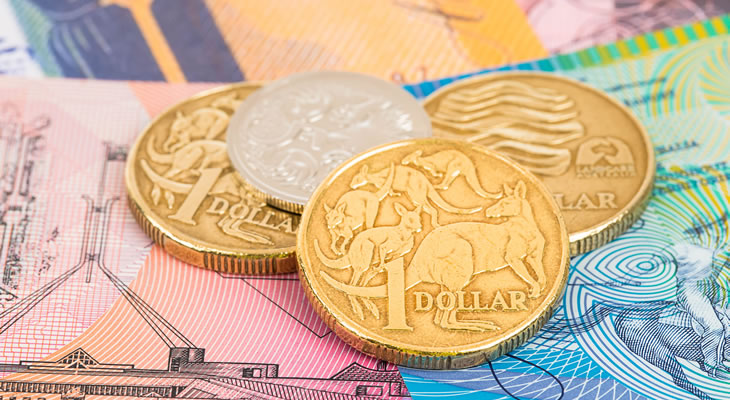Pound to Australian Dollar Exchange Rate Slips Following Monday Rebound
After rebounding strongly when markets opened yesterday, the Pound Sterling to Australian Dollar (GBP/AUD) exchange rate is sliding again today. Investors adjust positions on the pair amid geopolitical fears and anticipation for upcoming data.
Last week saw wide fluctuations in GBP/AUD, as the pair opened at the level of 1.7880 and briefly touched on a monthly high of 1.8170 before tumbling and closing the week at the level of 1.7717.
Yesterday, investors bought the Pound (GBP) back from its lowest levels. It was able to more easily benefit against the trade-correlated Australian Dollar (AUD), which was held back by geopolitical and trade jitters.
The Pound to Australian Dollar exchange rate is currently slipping following yesterday’s rebound, but the pair still trends near the level of 1.7842 – over a cent above the week’s opening levels.
Pound (GBP) Exchange Rates Rebound from Worst Levels despite Brexit Fear
Following weeks of losses on rising no-deal Brexit and UK recession fears, the Pound rebounded from its worst levels yesterday.
Analysts adjusted positions on the cheap currency, rather than the rebound being a sign of any fresh optimism on the outlooks for Sterling or the UK economy.
In fact, fears that Britain is headed towards a no-deal Brexit or a general election continue to weigh on the Pound outlook. Sterling is sliding again today, as yesterday’s rebound wears off.
Britain’s latest job market report came in mixed this morning, but left the Pound’s movement little changed.
While Britain’s key unemployment rate unexpectedly worsened to 3.9%, this was partially due to a much stronger than expected number of new jobs. UK wage growth also improved more than forecast.
Australian Dollar (AUD) Exchange Rates Steady Ahead of Major Wage and Jobs Data
The Australian Dollar recovered from a plummet last week, as the latest comments and forecasts from the Reserve Bank of Australia (RBA) left investors speculating that the RBA would not be as dovish as markets feared.
AUD recovery has been highly limited though, due to persisting US-China trade war fears. US-China trade jitters led to fresh Australian Dollar losses yesterday, making it easier for GBP/AUD to recover a cent.
China is Australia’s biggest trade partner, so the worsening trade tensions in recent weeks have hit the ‘Aussie’ particularly hard.
The Australian Dollar’s movement is currently steadying, as investors await tomorrow’s major Australian wage price data. This morning’s better than expected Australian business confidence stats helped AUD to steady.
Pound to Australian Dollar (GBP/AUD) Exchange Rate Investors Await Australian Wage Data
Investors are unlikely to move too much on the Australian Dollar today, as they await tomorrow’s key Australian data.
Wednesday’s Asian session will see the publication of Australia’s Q2 wage price index report. Australian wages are expected to remain at 0.5% quarter-on-quarter, and 2.3% year-on-year.
This significant dataset could give strong indication of the health of Australia’s job market, and will influence Reserve Bank of Australia (RBA) policy speculation.
The RBA expects higher wages to lead to higher consumption and inflation, so if Australian wages are steady or better than expected it would keep markets from betting on a more dovish RBA.
Of course, poor Australian wage data, or weak Australian jobs data on Thursday, would leave AUD unappealing and make it easier for GBP/AUD to rise.
The Pound outlook is weighed by no-deal Brexit fears, so the Pound to Australian Dollar (GBP/AUD) exchange rate’s best chance at a longer recovery is ‘Aussie’ weakness.


Comments are closed.